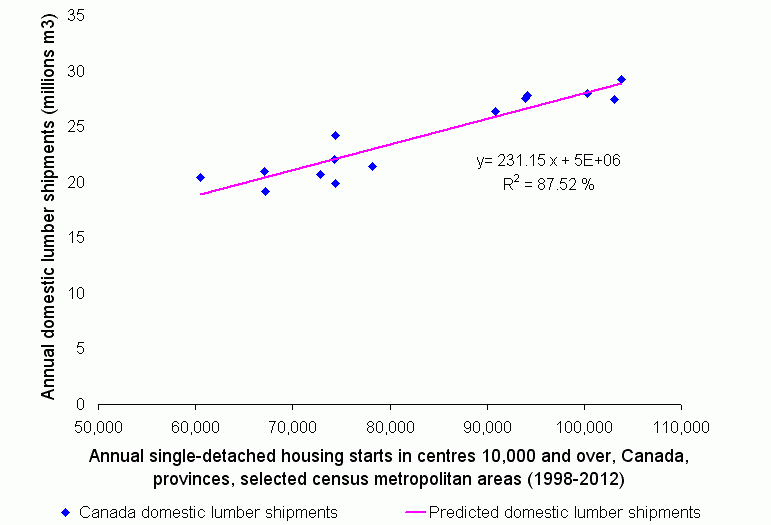Selective Cuttings
Canadian demand for lumber tightly linked to domestic housing starts
June 13, 2013
The Canadian lumber industry is export-oriented, repeatedly ranking as the first or second largest lumber exporter in the world. Still, over the past seven years, domestic shipments have averaged 38% of total Canadian lumber shipments, and have never fallen below 30%. We know how important the U.S. housing sector is to the U.S. demand for Canadian lumber, but how influential is the domestic housing market to Canadian lumber demand?
The graph below illustrates the relationship between annual domestic housing starts and annual softwood lumber (SWL) shipments to the domestic market with annual data from 1998. The R-squared for the line of best fit is 0.875—meaning that more than 87% of the variability of lumber shipments to the domestic market is explained by changes to Canadian single-detached housing starts. Not only is it a very strong correlation, it is also statistically highly significant. In other words, the domestic market is strongly dominated by domestic housing starts.
What this means to lumber producers in Canada is that any slow down in the Canadian housing sector in Canada would be directly reflected in a reduction in domestic demand for lumber. The recent trends in housing indicate that, in some regional markets, a slowdown might already be occurring. Fortunately, any potential domestic reduction in demand is occurring at the same time as increases in U.S. demand. Through the medium term, projected fast growing demand in U.S. and Asian markets combined with a tightening of North American supply is likely to more than offset the impacts of a potential domestic market retraction.
Scatter plot: Influence of single-family housing starts on domestic lumber shipments in Canada (1998-2012)
Source: CANSIM Sawmills Bulletins and Canada Mortgage and Housing Corporation

